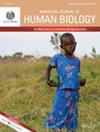Exploring the Predictive Value of 2D:4D Ratio in Cardiovascular Diseases and Metabolic Syndrome: A Systematic Review
Abstract
Objective
The second-to-fourth digit (2D:4D) ratio, considered a proxy for prenatal androgen exposure, has been proposed as a potential biomarker for various adult health conditions, including metabolic syndrome (MetS) and cardiovascular diseases (CVDs). However, evidence supporting this association remains inconsistent. This systematic review aimed to synthesize current findings on the association between 2D:4D ratios and risk factors for MetS and CVD.
Methods
Nine peer-reviewed studies published between 2006 and 2025 were included, selected based on predefined PICOS criteria. Study populations consisted of adult males and females from diverse ethnic backgrounds. Evaluated risk factors included anthropometric measures (body mass index, waist circumference, neck circumference, waist-to-height ratio), metabolic indicators (blood pressure, glucose levels, lipid profiles), and established diagnostic criteria for MetS and CVD. Study designs and methodological quality were assessed to ensure comparability and rigor.
Results
Of the nine studies, three focused exclusively on females, five included both sexes, and one involved only males. Five studies addressed CVD risk, two investigated MetS, and two evaluated both. Seven studies reported statistically significant associations between lower 2D:4D ratios and increased cardiometabolic risk, particularly in males. Right-hand 2D:4D ratio measurements showed stronger predictive value. In contrast, two studies found no significant associations.
Conclusion
While current evidence suggests a potential link between 2D:4D ratios, especially on the right hand, and cardiometabolic risk, inconsistencies remain. These findings highlight the need for further longitudinal and large-scale studies to determine the utility of the 2D:4D ratio as a noninvasive biomarker for MetS and CVD risk prediction.

 求助内容:
求助内容: 应助结果提醒方式:
应助结果提醒方式:


